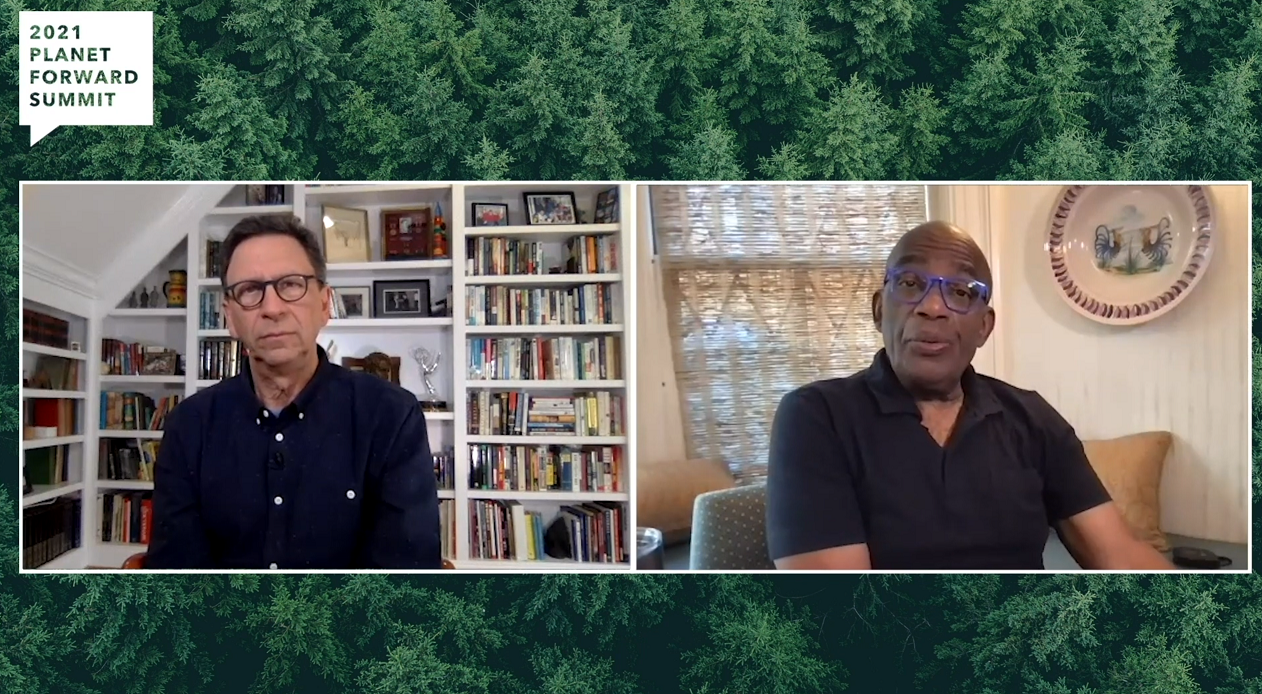
2021 Planet Forward Summit host Frank Sesno in conversation with NBC’s Today Show weatherman Al Roker.

2021 Planet Forward Summit host Frank Sesno in conversation with NBC’s Today Show weatherman Al Roker.
Here are five methods to make climate change more relevant to your audience from the guest speakers at the 2021 Planet Forward Summit.
John Sutter, a documentary filmmaker and National Geographic Explorer, spoke at the 2021 Planet Forward Virtual Summit on his current project. Sutter used the visual history of one area to tell the story of climate change. Sutter showed how the prized catch-of-the-day fish from the 1960s were larger and nearly unrecognizable to the fish we see today, through comparisons of photographs and documents from over the years.
Al Roker, “NBC’s Today Show” weather forecaster, uses his platform to travel the globe and amplify the voices of those directly affected by climate change. As a member of NBC’s Climate Unit, he interviews those experiencing changing landscapes and weather phenomena in their backyard. During the Summit, Roker highlighted the importance of having your environmental storytelling represent and reflect your diverse audience.
Phoenix Mayor Kate Gallego battles the effects of rising temperatures 145 days of the year where her city faces temperatures in the triple digits. Gallego’s goal is to shape climate-friendly policy while implementing safe and protective measures for her citizens to combat the heat. By collecting data on Phoenix’s annual rising temperatures and creating projection models, Gallego incorporates the information into a city-wide objective of making Phoenix a “heat ready city.” By informing the public on what the data and the models indicate, Phoenix residents can better prepare while Phoenix city officials implement protective measures to help alleviate the threat of Phoenix’s scorching temperatures.
It is essentially common knowledge that the younger generations will bear witness to the worst climate change has to offer. For Planet Forward student contributors William Walker and Adora Shortridge, they use their platforms to inspire hope and shed light on fresh ideas on methods of combating climate change. During their question and answer session with Summit host, Frank Sesno and George Washington University’s National Geographic Visiting Professor of Science Communication Lisa Palmer, Walker and Shortridge discussed their research on playground temperatures in Arizona. By highlighting younger voices and showing the impact they create, a more personal connection can be made with younger members of your audience.
The final keynote conversation of the Summit was with newly appointed Environmental Protection Agency Administrator Michael S. Regan. Regan is the first black man to lead the department, and an alumnus of North Carolina Agricultural & Technical State University and George Washington University’s Trachtenberg School of Public Policy and Public Administration. Regan’s position at the Environmental Protection Agency connects a story about climate change to politics, health and much more. If the goal is to make climate change more relevant to your audience, connect it to other issues and topics your audience may find relevant or interesting. Ultimately, climate change affects everything.